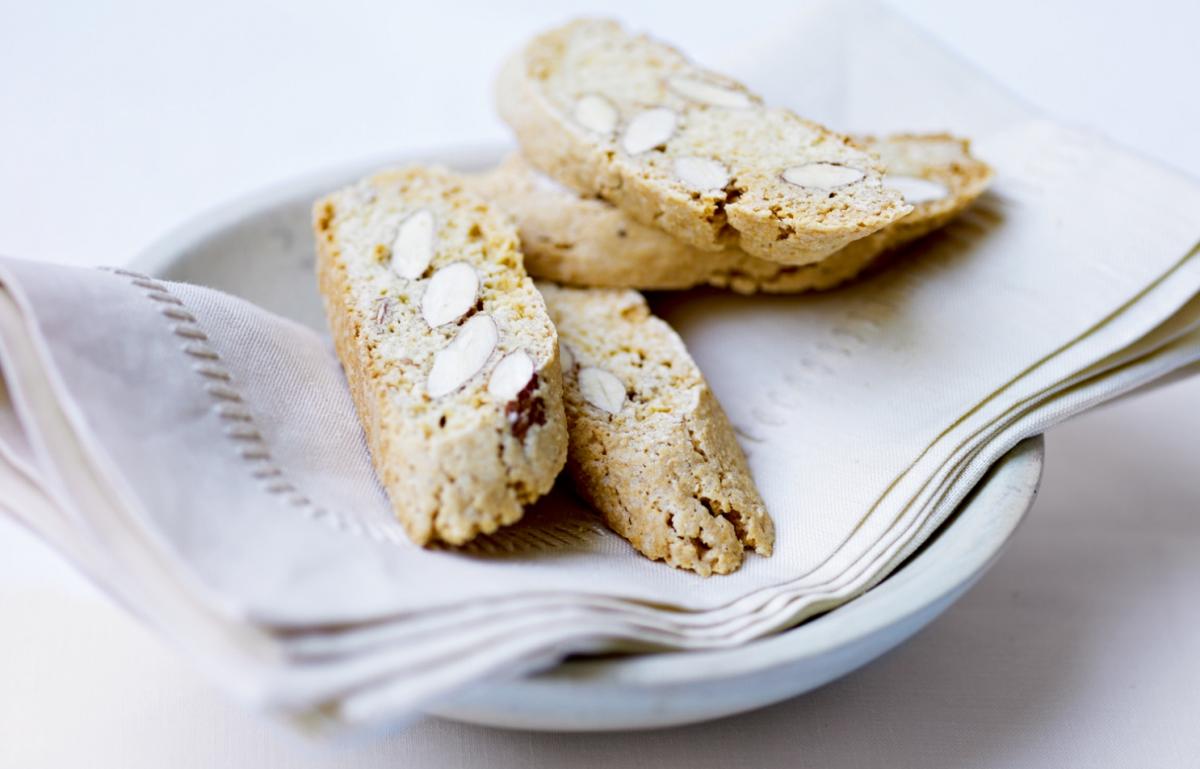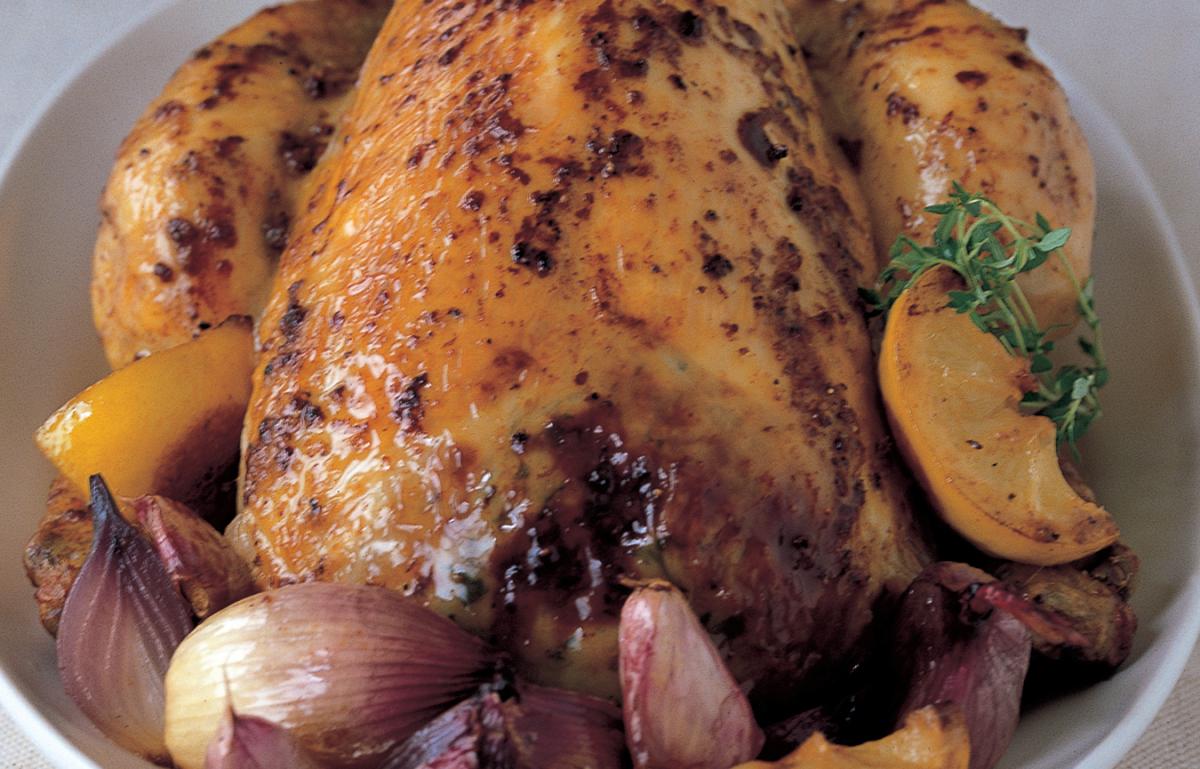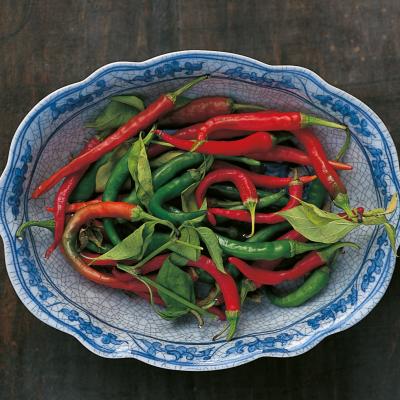


Season: Available all year
Forgive the pun, but the whole subject of chillies is a hotbed of confusion: there are so many varieties, and availability fluctuates from one variety to another. The only real guide is individual taste. I would avoid the fat, round, scorching Scotch bonnet pepper, unless you are a real hot-chilli lover. What I tend to do is buy the larger, fatter kind, which are usually not so fiercely hot, and if I want really hot, then the tiny Bird Eye chillies, used in Asian cooking, are the ones to go for because they are always reliably hot.
The other point to remember is that green is usually marginally hotter than red. There is a safety net, though: if you find you’re using fresh chillies and they haven’t given you quite enough heat, all you do is add a few drops of Tabasco to top up the fire.
How to prepare chillies: Very carefully. Why? Because the membrane and the seeds inside are the hottest part and can burn delicate skin. American cookbooks often advise using rubber gloves, but washing your hands with soap and water after handling should be okay. If your hands touch the delicate skin on your face or, worse, eyes, it can burn the skin. So slice the tops off, cut them in half lengthways, hold down the tip of each chilli half with your finger and, using a sharp knife, scrape away all the membrane and seeds and discard them.
After that, either slice the chilli, or chop it finely, then carefully wash your hands.
You can also watch How To Prepare Chillies in our Cookery School video here
Follow us Like us on Facebook Follow us on twitter Follow us on instagram Follow us on pinterest Follow us on youtube
© 2001-2024 All Rights Reserved Delia Online